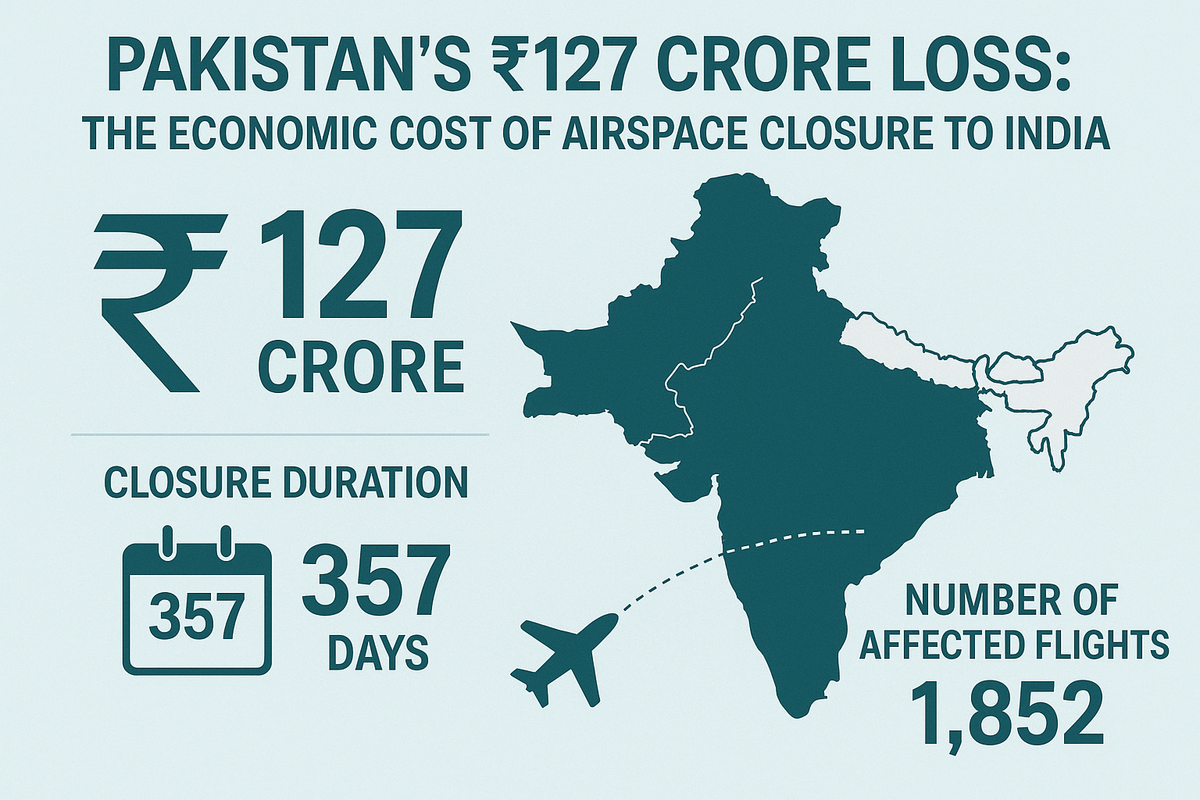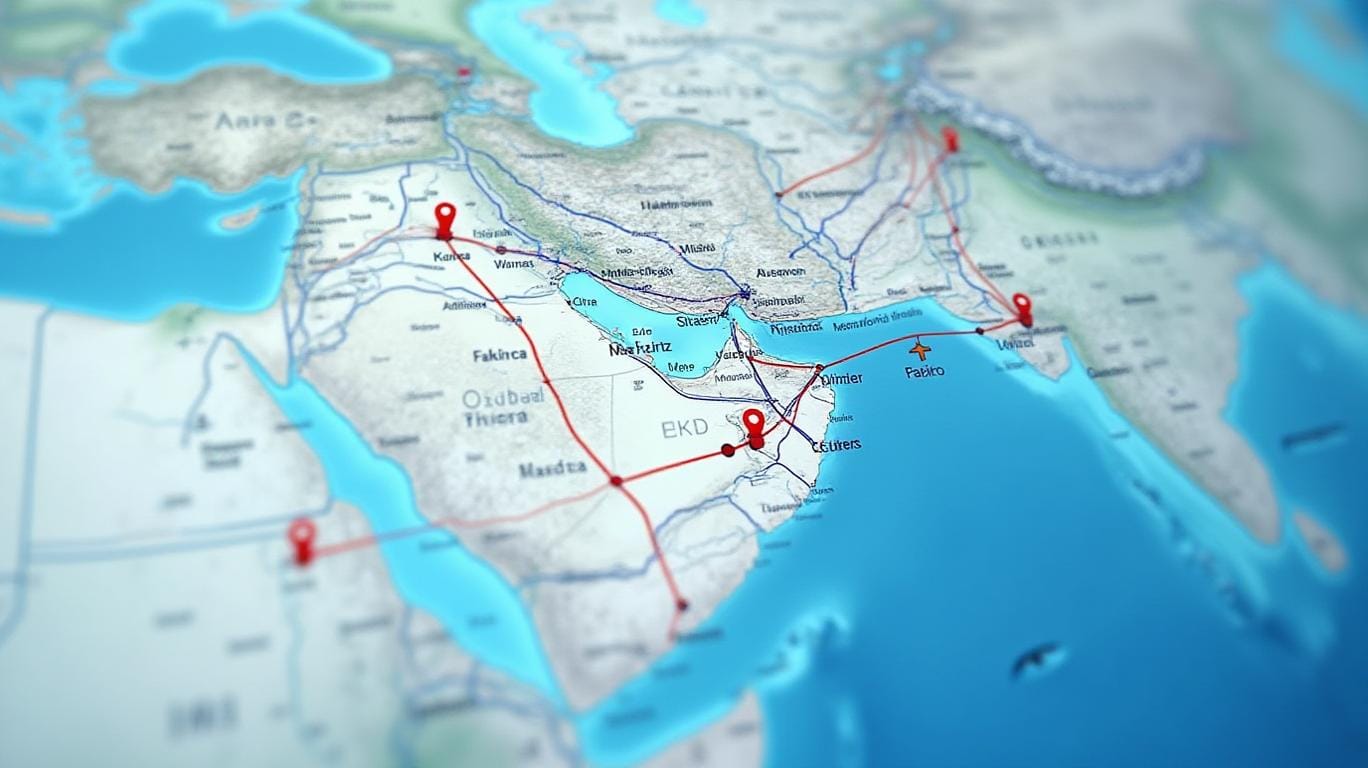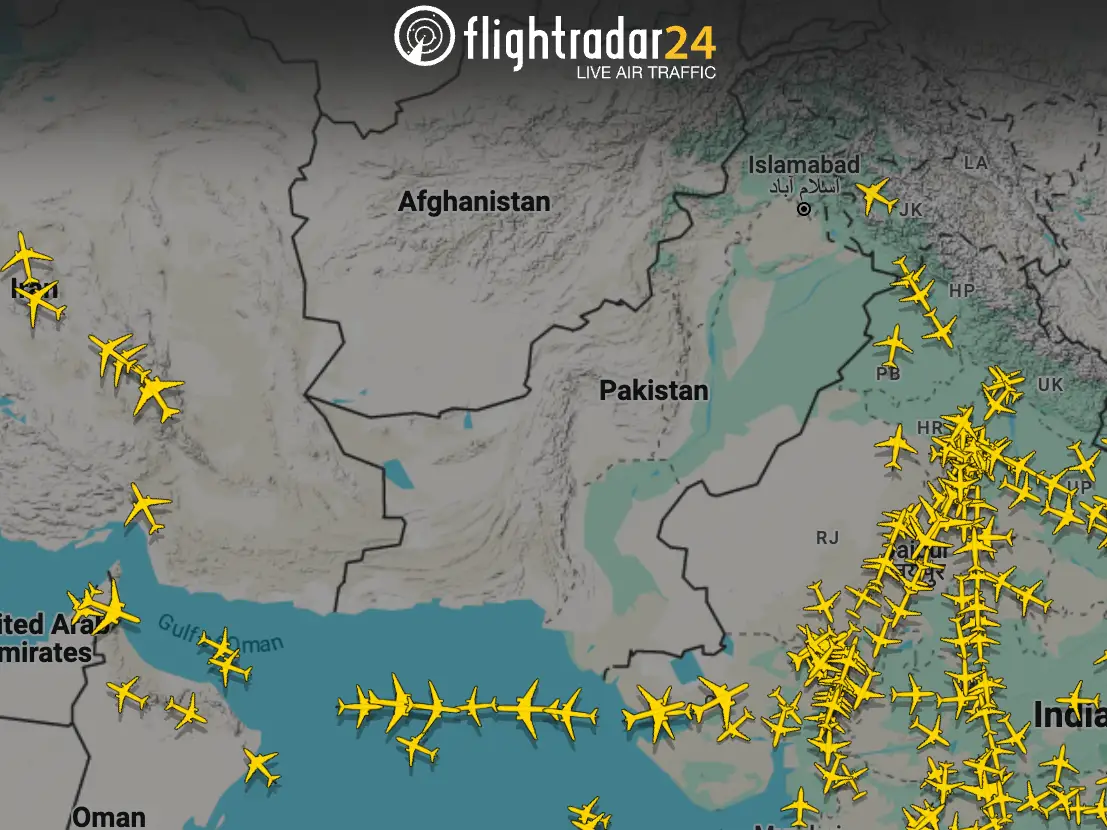Pakistan's Soaring Self-Inflicted Cost: The ₹127 Crore Loss from Airspace Closure to India
Pakistan's airspace closure to India has resulted in a staggering ₹127 crore loss in just two months, a profound case study in the economic boomerang effect of geopolitical tensions.

Written by Lavanya, Intern, Allegedly The News
ISLAMABAD, August 14, 2025
A Sovereign Stand or a Self-Inflicted Wound? Pakistan’s Costly Airspace Gambit
In the complex and often volatile landscape of South Asian geopolitics, actions speak louder than words, and their economic consequences can echo for months, if not years. Following a period of heightened military and diplomatic tensions, Pakistan made a significant move by closing its airspace to Indian-registered aircraft. What was intended as a powerful political statement and a measure of strategic leverage has, in a stunning turn of events, resulted in a crippling financial blow to Pakistan's own aviation sector. With a reported loss of ₹127 crore in just two months, this incident provides a powerful and sobering case study on the economic cost of using airspace as a tool of political coercion.
The Genesis of the Crisis: A Chronology of Conflict
The roots of this airspace closure are deeply intertwined with the latest chapter in the long-standing animosity between India and Pakistan. The chain of events began with a tragic terror attack in Pahalgam, Jammu and Kashmir, on April 22, 2025, which claimed the lives of 26 people. India swiftly attributed the attack to Pakistan-based militants and responded with a series of diplomatic and economic measures.
- April 23, 2025: India suspended the Indus Waters Treaty, a landmark 1960 agreement, a move that sent a clear signal of serious diplomatic escalation.
- April 24, 2025: In a swift and direct counter-move, Pakistan’s Ministry of Defence, through its Civil Aviation Authority (CAA), issued a Notice to Airmen (NOTAM) withdrawing overflight permissions for all Indian-registered aircraft. The move was declared a "strategic and diplomatic" necessity, a way to retaliate without resorting to direct military confrontation.
- April 30, 2025: India, in a reciprocal action, imposed a ban on all Pakistani-operated, owned, or leased aircraft from its airspace, including military flights. This created a complete cessation of direct air traffic between the two nations and a total blockage of a key international air corridor.
- June 30, 2025: As the bans continued, the financial toll for Pakistan became clear. The Ministry of Defence officially informed the National Assembly that the Pakistan Airports Authority (PAA) had incurred a massive revenue loss. According to the official figures, between April 24 and June 30, the PAA suffered a shortfall of over PKR 4.1 billion, or approximately ₹127 crore ($14.39 million), in overflying revenue.
This timeline reveals a rapid escalation where political decisions, made in a matter of days, led to an economic fallout that continues to mount. The initial strategic justification for the ban has now been overshadowed by the undeniable financial consequences.
Dissecting the Financial Damage: The Cost of a Closed Sky
The figure of ₹127 crore is not merely a number; it represents a significant portion of the Pakistan Airports Authority's (PAA) annual revenue from overflight charges. Overflying revenue is the fee an airline pays a country to use its airspace, a critical income stream for any national aviation body. The ban effectively eliminated this revenue from over 100 to 150 Indian flights that would typically traverse Pakistani airspace daily.
To put this into perspective, a similar airspace closure in 2019 following the Balakot airstrike cost Pakistan an estimated ₹228 crore over several months. However, the current ban is proving even more expensive. PAA's average daily overflight earnings had risen to an estimated $760,000 in 2025, up from $508,000 in 2019. The two-month loss represents a significant portion of this potential earnings, and every day the ban remains in effect adds to the accumulating cost.
It is crucial to understand that this financial hit is not just about the PAA. The loss ripples through various sectors of Pakistan's economy. The revenue that would have been collected from these overflight fees could have been used to fund essential airport maintenance, upgrades, and air traffic control infrastructure. The diversion of this capital away from the aviation sector could have a long-term impact on its safety and efficiency.

A Ripple Effect: How Airspace Closure Hits Global Aviation
While Pakistan's financial loss is the most direct consequence, the airspace closure has a far broader, global impact. Geopolitical airspace restrictions are a major headache for airlines worldwide, particularly those operating on crucial East-West routes.
Increased Operational Costs for Airlines
The most immediate effect for airlines is the need to reroute. Flights from India to Europe, the Middle East, and North America, which would typically take a direct path over Pakistan, are now forced to fly longer, more circuitous routes.
- Increased Flight Time: Rerouting adds an average of 30 minutes to over two hours to flight times, depending on the destination. For a commercial airline, this translates directly to increased labor costs for the crew and a longer aircraft utilization period.
- Higher Fuel Consumption: A longer flight path means more fuel is burned. With fluctuating global fuel prices, this can significantly impact an airline's operational budget and profitability. The longer flights also contribute to higher carbon emissions, which is a growing concern for the industry and regulators.
- Disrupted Schedules and Logistics: Airlines must adjust their schedules to accommodate longer flight times, which can create a domino effect of delays throughout their network. This affects not only passenger travel but also time-sensitive air cargo, impacting global supply chains for everything from electronics to pharmaceuticals.
A concrete example of this is Air India, which had to suspend its non-stop flights between Delhi and Washington, D.C., from September 1, 2025. While this decision was also linked to a fleet retrofit program, the airline explicitly cited "the continued closure of Pakistani airspace" as a contributing factor, leading to "longer flight routings and increased operational complexity."
The 'Boomerang Effect' in Action
The decision to close airspace as a form of diplomatic pressure is a classic example of what is known as the "boomerang effect." In this scenario, a political action taken against an adversary ends up causing significant harm to the entity that initiated the action. Pakistan, in its attempt to pressure India, has effectively sanctioned itself. The government's defense that "sovereignty and national defence take precedence over economic considerations" overlooks the fact that a strong economy is a cornerstone of national security. A state that willingly absorbs such financial losses for a political gesture may find its ability to fund its defense and other critical sectors compromised in the long run.
Navigating a New Reality: The Future of Geopolitical Aviation
The current standoff is not just a momentary blip; it is a symptom of a broader trend in a politically volatile world. As geopolitical disputes become more frequent and unpredictable, the global aviation industry must brace for more such disruptions. This incident highlights the need for airlines, regulators, and governments to develop robust contingency plans and alternative air routes. It also underscores the importance of international cooperation to ensure the safety and efficiency of global air travel, a principle that is often challenged by nationalistic interests.

The Expensive Price of Posturing
The ongoing airspace closure between India and Pakistan is a powerful and costly lesson in the intricate relationship between politics and economics. The reported ₹127 crore loss for Pakistan's aviation authority in just two months is a direct consequence of a decision that prioritized political posturing over economic pragmatism. This financial hit is not an isolated event; it represents a significant drain on a country with a struggling economy and highlights the inherent risks of weaponizing a crucial international asset like airspace. The incident serves as a stark reminder that in an interconnected globalized world, actions intended to harm an adversary can often lead to a self-inflicted wound, demonstrating that the price of a political statement can be unexpectedly, and unsustainably, high.
Beyond the Headlines: The Call for a Strategic Recalibration
The financial and operational burdens of this airspace closure are a clear signal that the old ways of diplomatic warfare are becoming increasingly costly. The question is no longer just about who is right or wrong, but about who can afford to play the game. How can we encourage a new paradigm in regional diplomacy where open communication and collaborative problem-solving replace punitive measures that harm both sides? What mechanisms can be put in place to insulate critical global infrastructure, such as air routes, from the destabilizing effects of regional political disputes?
Sources
Dawn, The Economic Times, Flightradar24, The Times of India.




